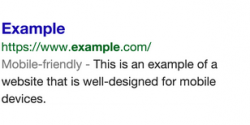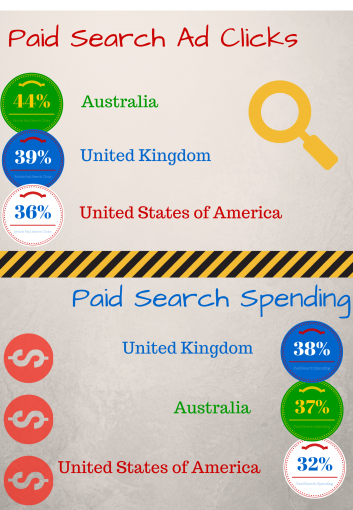BLOG
Mobile Design and its Increasing Importance
Back in November 2014, eMarketer published an article on Australia’s dominance over the US and UK in regards to higher search clicks, and spending via mobile devices (http://www.emarketer.com/Article.aspx?R=1011539).
With Australia commonly referred to New Zealand’s big sister, is it possible to conclude that it is only a short period of time before New Zealand’s mobile search clicks and spending follows suit?
With the economies of scale that are prevalent here, NZ with a smaller proportionate population of Australia, it is evident that our total spend will never match that of our Aussie counterparts. But with the growth in uptake in smartphone use and changing use patterns within the New Zealand market, NZ businesses with an online commerce base should be preparing themselves now in order to cash in and ensure an increase in customer satisfaction with their current and potential customer bases.
New Zealand and mobile use
Using comparative percentages, it is impossible to match or even surpass big brother in regards to this data. 2013 data of mobile use in New Zealand indicates a significant uptake in smartphone and tablet ownership with an expected inclining trend. With greater competition arising in the smartphone market, it is predicted that uptake will continue as smartphones and tablets drop in price – becoming more affordable to the consumer.
Okay so everyone might own a phone, but they are only checking their social media aren’t they?
Five years ago, it is highly likely that the mobile market was limited to making calls, placing SMS and in its infancy, checking social media updates, etc. But it is evident from these Australian statistics, that the use of the mobile in the consumer process is becoming more common than we would have ever thought.
While NZ remains in the shadow of Australia’s high search clicks and spending via mobile devices, the mobile is a key component in an ever changing commerce model. The smartphone revolution isn’t just about keeping in touch with family and friends, but is now a tool for gathering information, comparing prices and ultimately spending our hard-earned money.
- 51% of smartphone users have used phone to locate stores
- 31% have used to compare prices
- 28% of all NZ internet users aged between 15-65 have purchased physical goods online during the last 12 months via a smart phone
- 18% have purchased via a tablet
Walking the knife edge
With this shift in consumer habits, the prediction that the mobile device will become a leading hand in how some consumers shop and purchase is gaining momentum. All businesses are now coming to another junction in their sales strategies; ignore or embrace the mobile revolution?
The good news for some businesses is that their brand is well known and therefore at the forefront of people’s minds when they are ready to part with their money (think Amazon). While they have a reputation as a leader within the current consumer process through PC searches, and in most cases tablet, it is with reservation that they would ignore the mobile consumer. By failing to adapt websites to be mobile friendly, these leading sites may in the long term cause dissatisfaction amongst mobile shoppers. This in turn may affect the repeat consumer volume as they move to competitors that are mobile-friendly and subsequently move attention away from leading brand’s static websites.
The other 99.9% of business owners need to be looking at the mobile popularity as another opportunity, but also as a threat. Our websites must be mobile friendly and responsive, they must complement the user experience, and make it as easy as possible to extract the customer dollar.
The mobile phenomenon is one that puts the customer firmly in control, however the advantage is squarely in the court of those businesses that take early steps towards catering to the mobile user. With mobility comes early access to information and a decision-buying process that can evade the reasoning part of our purchasing decisions.
The future is more mobile
Discussions that Google in the future may start to reward those business (websites) that are mobile friendly with higher search rankings is rife. In late 2014 a trial was running where mobile friendly sites were being denoted with a green telephone icon in search listings. With a desire to reward those sites that are adding value to the user experience, there is a likelihood that non-friendly/responsive sites will be shown less preference in Google’s search results. The notation that a search result outcome (website) is mobile-friendly has already been implemented, with a switch to a statement rather than a small icon.

To combat this, businesses will need to look to redevelop their websites to ensure that they are mobile friendly. The down side is that if your website is not classified as mobile-friendly, the user has a clear indication and will not even attempt to access the site – the will just scroll on down the page to the next competitor who is. GetSmart reports that 61% of people who access a particularly site but couldn’t because it wasn’t optimised for mobile, would visit the competitors site[1].
Conclusion
With predictions of New Zealanders having 90% ownership of a smartphone and 78% tablet ownership by 2018[2] where will your business and its products be in the minds of a consumer, or should I say in the hands of the consumer?
At a minimum, a business should be looking at their websites through the lens of the mobile.
If we are ever to knock Australia off its perch in regards to its search clicks and spending via mobile devices, New Zealand businesses will require a fundamental shift in philosophy in aligning their online strategy to include mobiles.



.png?resize=1&w=354&h=487&crop=1)






